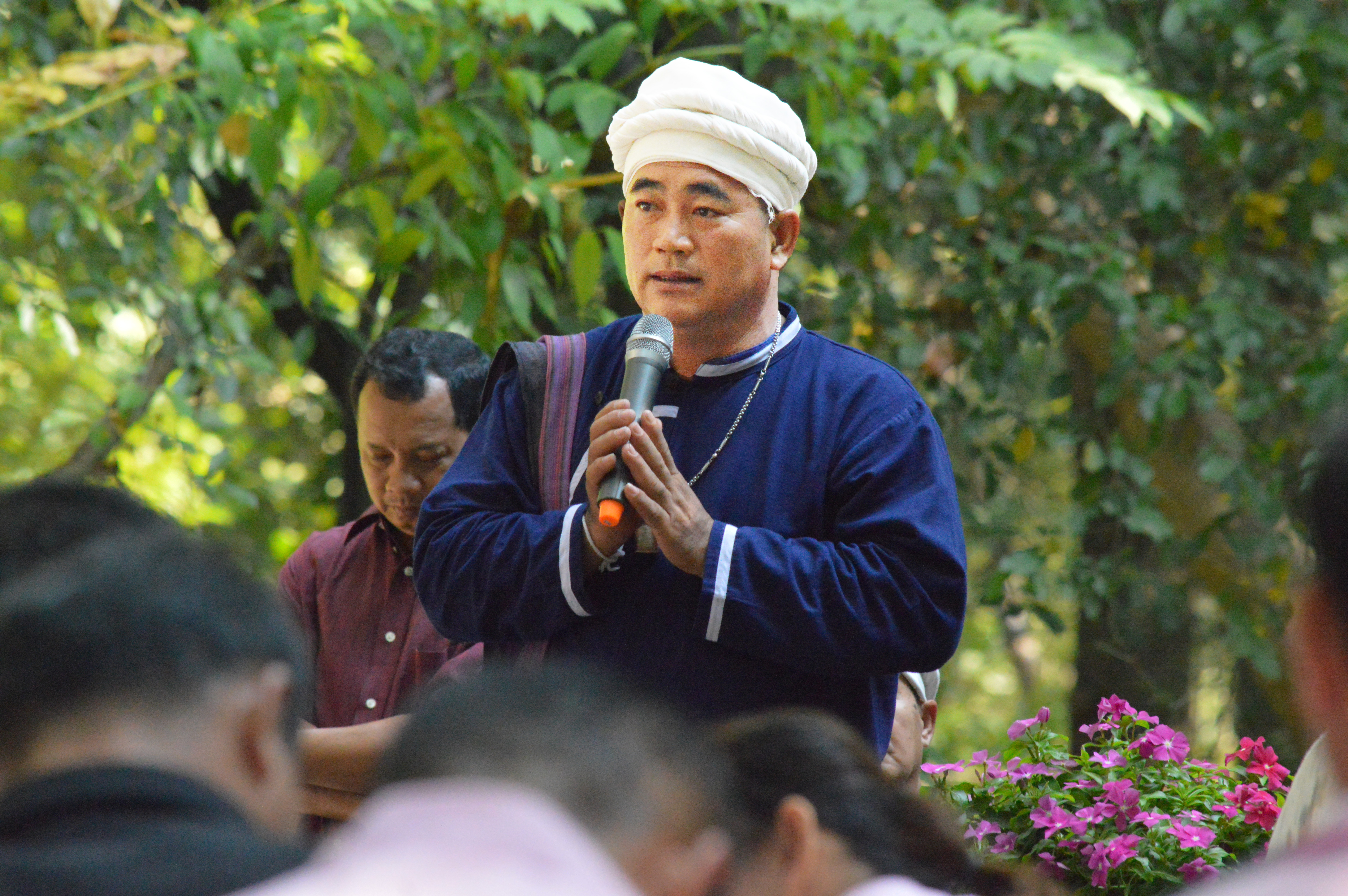Community Forests as Intangible Cultural Heritage and the Community Forest Act of 2019
Main Article Content
Abstract
A community forest is a form of intangible heritage, created by a particular process of interaction between humans and nature. In Thailand, there are over 12,000 areas that have been created as community forests, and in total they cover more than 7.6 million rai (approximately 1.2 million hectares). The administration and governance of these areas has been the subject of conflict between the state and communities. A bill on the management of community forests was the first legislation under a new provision enabling the public to propose legislation to parliament. The bill went through repeated cycles of redrafting, and was finally passed in 2019. Communities have expressed dismay at the provisions of this legislation. At the root of this dispute are disagreements both over the rights to land and over the qualifications for managing such intangible heritage. In brief, the state claims rights of ownership and control over the land on grounds of historical precedent and its responsibility to protect areas designated as forest, while communities claim rights of ownership on management on grounds of their role in the creation of this intangible heritage.
Article Details
References
“Khomun kan anumat khrongkan pa chumchon” [Database of community forests project approval], Department of Forestry, https://www.forest.go.th/community-extension/2017/02/02/, accessed 3 March 2020.
UNESCO, Convention for the Safeguarding of Intangible Cultural Heritage, https://ich.unesco.org/en/convention, accessed 28 March 2022.
Paul Hattaway, Peoples of the Buddhist World (Carlisle: Piquant Editions, 2004), 350.
Lakkhana Phopromyen, “Sitthi chumchon nai kanchatkan sapphayakon thammachat: pa chumchon ban thung yao” [Community rights for natural resources management: Ban Thung-yao community forest], 2011, 3-19, http://k-rc.net/imageupload/23902/C_Tongyouw.pdf, accessed 30 July 2017,.
Hattaway, Peoples of the Buddhist World, 350.
Chalardchai Ramitanon, Anan Ganjanapan, and Santhita Ganjanapan, “Pa chumchon nai prathet thai: naeothang kan phatthana lem song” [Community forest in Thailand: development trends, volume 2], (Bangkok: Local Community Development Foundation, 1993), 60-62.
Yos Santasombat, “Niwet witthaya chattiphan sapphayakon chiwaphap lae sitthi chumchon” [Ethnic ecology, biological resources and community rights], (Bangkok: Biodiversity Research and Training Program, 2004), 24.
Lakkhana, “Sitthi chumchon nai kančhatkan sapphayakon thammachat,” 3-19.
Anuwong Saetang, “Nang phakhi wannasak mae khong khon ban thung yāo” [Mrs Pakee Wannasak, Mother of Ban Thung-yao], 10th Green Globe Awards, 2008, http://pttinternet.pttplc.com/greenglobe/2551/personal-08.html, accessed 28 March 2022.
Ann Danaiya Usher, Thai Forestry: A Critical History (Chiang Mai: Silkworm Books, 2009), 37-43.
Sanae Chamarik and Yos Santasombat, Pa chumchon nai prathet thai naeothang kan phatthana lem nueng [Community forest in Thailand: Development direction, volume 1], (Bangkok: Local Community Development Foundation, 1993), 110-113.
RECOFTC, “Community Forest in Thailand”, https://archive.recoftc.org/basic-page/community-forestry-thailand, accessed 28 March 2022.
Chalardchai, Anan, and Santhita, “Pa chumchon nai prathet Thai,” 42-45.
Chalardchai, Anan, and Santhita, “Pa chumchon nai prathet Thai,” 45-48.
Pinkeaw Laungaramsri, “Niwetwitthaya phuenban: kan to su khong khon chai khop phuea sang phuenthi thang sangkhom kho̜ng khon kap pa” [Folk ecology: The struggle of marginalized people on developing a social space of people and forests], in Khwamru kap kanmueang rưeang sapphayakon [Knowledge and politics of natural resources] (Bangkok: Princess Maha Chakri Sirindhorn Anthropology Centre, 2005), 9-42.
Lakkhana, “Sitthi chumchon nai kanchatkan sapphayakon thammacha.”
Achara Rakyuttitham, “Phonlawat khong khwam ru thongthin kap thang luek nai kan jatkan sapphayakon bon phuenthi sung: korani sueksa chumchon mong ban mae sa mai amphoe mae rim jangwat chiang mai” [Dynamics of local knowledge on choices in highland resource management: case study of the Hmong village Ban Mae Sa Mai in Amphoe Mae Rim, Chiang Mai], in Khwamru kap kanmueang rưeang sapphayakon [Knowledge and politics of natural resources] (Bangkok: Princess Maha Chakri Sirindhorn Anthropology Centre, 2005), 48-56.
Chalardchai, Anan, and Santhita, “Pa chumchon nai prathet Thai,” 135.
Council of State, The Termination of Forest Concession Decree, https://www.krisdika.go.th/librarian/getfile?sysid=300842&ext=htm, accessed 28 March 2022.
Krissada Boonchai, Kan mưueang pa mai thai yuk lang sampathan [Politics of Thai forestry after the concession period] (Bangkok: Life and Nature Rehabilitation Foundation, 2005), 237-280.
Krissada Boonchai and Ravi Thavorn, “Samsip pi khabuankan pa chumchon botrian læ thitthang kan khapkhluan” [30 years of the community forest movement: lessons and directions for moving forward], (Bangkok: RECOFTC, 2019), https://www.recoftc.org/sites/default/files/public/publications/resources/recoftc-0000354-0001-th.pdf, accessed 14 March 2020.
Chaipong Samnieng, “Kotmai thi yae mai mi sia di kwa: pho. ro. bo. pa chumchon 2562 amnat khong prachachon rue watthakam amphrang khong rat” [Better not having a bad law, community forest act 2019: people power or the concealed discourses of the state], Prachathai, https://prachatai.com/journal/2019/12/85449, accessed 28 March 2022.
“Phak prachachon ruam thok praden kotmai pa chumchon won ratthaban hai sit chaoban mi suan wangphaen rak pa yang yangyuen” [People discussed community forest law requesting the government to grant rights to villagers to participate in sustainable forest conservation plans], Transbordernews, https://transbordernews.in.th/home/?p=8821, accessed 28 March 2022.
Department of Forestry Thailand, Community Forest Act 2019, http://forestinfo.forest.go.th/Content/file/law136-290562-71.pdf, accessed 28 March 2022.
Khemarat Thalerngsri and Pasuk Phongpaichit, “rabop kamkap dūlǣ thīdin phư̄a kānphatthanā: thāng lư̄ak kānchai thīdin læ nayōbāi thīdin nai yīsip pī khāng nā” [Land Regulatory Systems for Development: Land Use Alternatives and Land Policy for the Next 20 Years], (Bangkok: Thailand Science Research and Innovation (TSRI), 2021), 280.
Same source as above
Khemarat Thalerngsri and Pasuk Phongpaichit, “rabop kamkap dūlǣ thīdin phư̄a kānphatthanā: thāng lư̄ak kānchai thīdin læ nayōbāi thīdin nai yīsip pī khāng nā” [Land Regulatory Systems for Development: Land Use Alternatives and Land Policy for the Next 20 Years], (Bangkok: Thailand Science Research and Innovation (TSRI), 2021), 275-304
Elinor Ostrom, Governing the Commons: The Evolution of Institutions for Collective Action, (Cambridge: Cambridge University Press, 1990).


